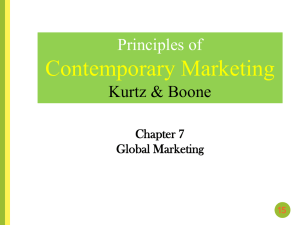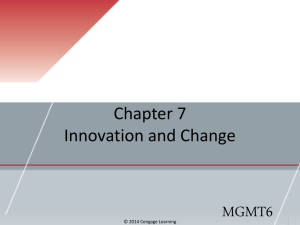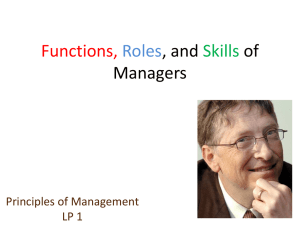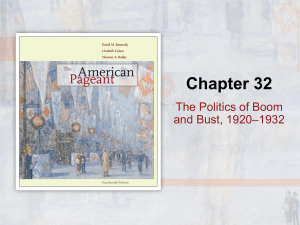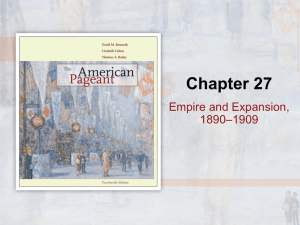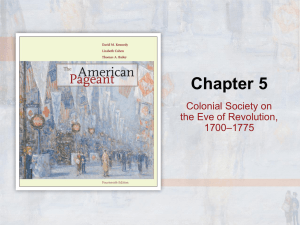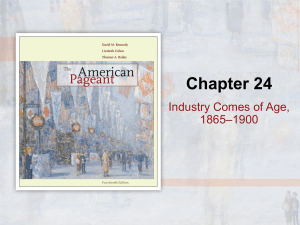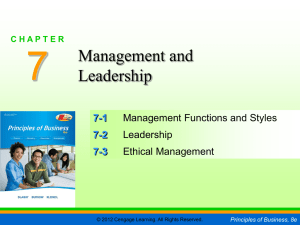Chapter 2
advertisement
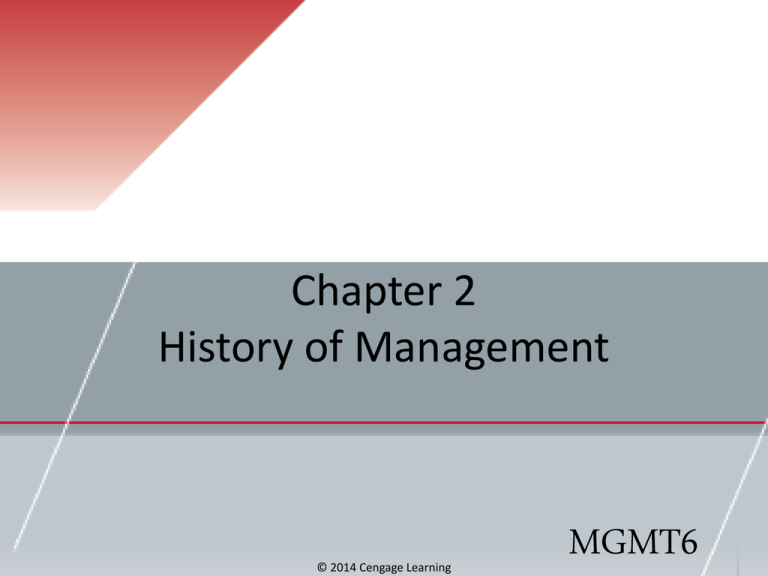
Chapter 2 History of Management © 2014 Cengage Learning MGMT6 2-1 explain the origins of management 2-2 explain the history of scientific management 2-3 discuss the history of bureaucratic and administrative management 2-4 explain the history of human relations management 2-5 discuss History the history of operations, information, of 2systems, and contingency management Management © 2014 Cengage Learning © 2014 Cengage Learning 2-1 Why We Need Managers Today During the Industrial Revolution… • Availability of power enabled low-paid, unskilled labor to replace high-paid skilled artisans • Job carried out in large, formal organizations rather than fields, homes, or small shops © 2014 Cengage Learning 2-1 Scientific Management The thorough study and testing of different work methods to identify the best, most efficient ways to complete a job. © 2014 Cengage Learning 2-2 © 2014 Cengage Learning 2-2 Frank and Lillian Gilbreth • Motion study – breaking each task or job into separate motions and then eliminating those that are unnecessary or repetitive • Motion study typically yielded production increases of 25 to 300 percent. 2-2 © 2014 Cengage Learning Henry Gantt • Gantt Chart – visually indicates what tasks must be completed at which times in order to complete a project • One of the first to recommend that companies train and develop workers 2- “A scientific investigation in detail of each piece of work, and the determination of the best method and the shortest time in which the work can be done. “ 2- “A teacher capable of teaching the best method and the shortest time.” 3. “Reward for both teacher and pupil when the latter is successful.” © 2014 Cengage Learning 2-2 © 2014 Cengage Learning 2-2 Bureaucratic Management: Max Weber • Bureaucracy – “the exercise of control on the basis of knowledge” – people led by virtue of rational-legal authority © 2014 Cengage Learning 2-3 © 2014 Cengage Learning 2-3 Administrative Management: Henri Fayol “The success of an enterprise generally depends much more on the administrative ability of its leaders than on their technical ability.” © 2014 Cengage Learning 2-3 Fayol’s Fourteen Principles of Management 1. 2. 3. 4. 5. 6. 7. 8. 9. 10. 11. 12. 13. 14. Division of work Authority and responsibility Discipline Unity of command Unity of direction Subordination of individual interests to the general interest Remuneration Centralization Scalar chain Order Equity Stability of tenure of personnel Initiative Esprit de corps © 2014 Cengage Learning 2-3 Constructive Conflict: Mary Parker Follett • Conflict – “the appearance of difference, difference of opinions, of interests” • Integrative conflict resolution – have both parties indicate their preferences and then work together to find an alternative that meets the needs of both © 2014 Cengage Learning 2-4 Mary Parker Follett On constructive conflict “As conflict—difference—is here in this world, as we cannot avoid it, we should, I think, use it to work for us. Instead of condemning it, we should set it to work for us.” On power “It seems to me that whereas power usually means power-over, the power of some person or group over some other person or group, it is possible to develop the conception of power-with, a jointly developed power, a co-active, not a coercive power.” On the giving of orders “An advantage of not exacting blind obedience, of discussing your instructions with your subordinates, is that if there is any resentment, any come-back, you get it out into the open, and when it is in the open you can deal with it.” On authority “Authority should go with knowledge and experience, that is where obedience is due, no matter whether it is up the line or down.” © 2014 Cengage Learning 2-4 Mary Parker Follett On leadership “Of the greatest importance is the ability to grasp a total situation. . . . Out of a welter of facts, experience, desires, aims, the leader must find the unifying thread. He must see a whole, not a mere kaleidoscope of pieces. . . The higher up you go, the more ability you have to have of this kind.” On coordination “The most important thing to remember about unity is—that there is no such thing. There is only unifying. You cannot get unity and expect it to last a day— or five minutes. Every man in a business should be taking part in a certain process and that process is unifying.” On control “Central control is coming more and more to mean the co-relation of many controls rather than a superimposed control.” © 2014 Cengage Learning 2-4 Hawthorne Studies: Elton Mayo • Human factors related to work were found to be more important than physical conditions or design of work. • Workers not just extensions of machines, and financial incentives weren’t necessarily the most important for motivating workers. • Managers better understood effect of group social interactions, employee satisfaction, and attitudes on individual and group performance. 2-4 © 2014 Cengage Learning Cooperation and Acceptance of Authority: Chester Barnard • Organization – “system of consciously coordinated activities or forces of two more persons” • The extent to which people willingly cooperate in an organization depends on how workers perceive executive authority and whether they’re willing to accept it. © 2014 Cengage Learning 2-4 Zone of Indifference People will be indifferent to managerial directives if they… • are understood • are consistent with organization’s purpose • are compatible with people’s personal interests • can actually be carried out by those people © 2014 Cengage Learning 2-4 Operations Management • Eli Whitney – standardized, interchangeable parts • Garspard Monge – techniques for drawing 3-D objects on paper • Oldsmobile Motor Works – “hand-to-mouth inventory” © 2014 Cengage Learning 2-5 Information Management Throughout history, organizations have pushed for and quickly adopted new information technologies to reduce the cost or increase the speed with which they can acquire, retrieve, or communicate information. © 2014 Cengage Learning 2-5 Systems Management • System – a set of interrelated elements or parts that function as a whole • Subsystems – smaller systems within a larger system • Synergy – occurs when two or more subsystems working together can produce more than they can working apart © 2014 Cengage Learning 2-5 Systems • Closed systems – can function without interacting with their environments • Open Systems – interact with their environments and depend on them for survival © 2014 Cengage Learning 2-5 © 2014 Cengage Learning 2-5 Contingency Management There are no universal management theories; the most effective management theory or idea depends on the kinds of problems or situations that managers or organizations are facing at a particular time. © 2014 Cengage Learning 2-5 Barcelona Restaurant Group <click screenshot for video> 1. What aspects of restaurant work are especially challenging to wait staff, and how does Barcelona’s approach to management help employees overcome the downsides of the job? 2. What steps do the leaders of Barcelona Restaurant Group take to insure cooperation and acceptance of authority from their employees? 3. Would the management style of Barcelona Restaurant Group best be described as scientific management or contingency management? © 2014 Cengage Learning
